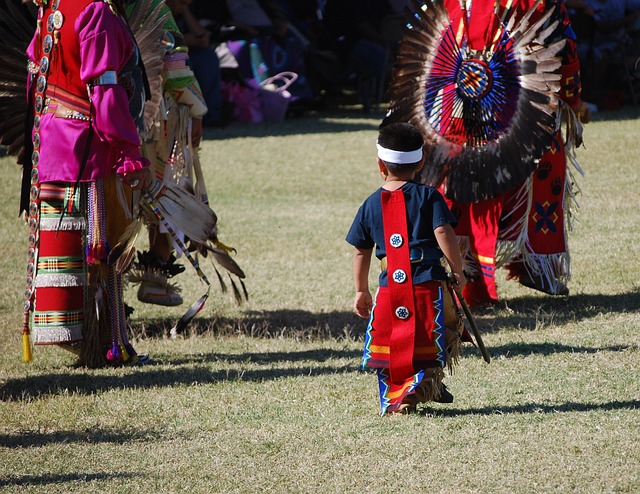W “Rzeczpospolitej” czytamy:
Kanada nie dofinansuje poszukiwań grobów dzieci przy katolickich szkołach
Władze Kanady wycofały się z finansowania poszukiwań grobów domniemanych ofiar szkół rezydencjalnych dla indiańskich dzieci. Wcześniej – po tym jak przy jednej z takich placówek znaleziono ok. 200 mogił – w kraju doszło do fali ataków na kościoły.
Publikacja: 06.03.2025
Autor: adm = Ada Michalak
Absolwentka dziennikarstwa i komunikacji społecznej na Uniwersytecie SWPS, dziennikarka, redaktorka.
W 2021 roku świat obiegła wiadomość, że przy jednej ze szkół rezydencjalnych dla indiańskich dzieci – placówek powstałych z inicjatywy rządu Kanady pod koniec XIX wieku, których prowadzenie powierzono głównie Kościołowi katolickiemu oraz anglikańskiemu – odkryto 215 grobów. Rozpoczęto wówczas poszukiwania mogił na większą skalę. Choć pochłonęło to miliony dolarów, ostatecznie nie znaleziono żadnych dowodów na to, że grobów, przy innych tego typu placówkach, może być więcej. W związku z tym kanadyjski rząd federalny wycofał się z finansowania poszukiwań.
Pozostało jeszcze 88% artykułu
A tymczasem literatura na ten temat jest bardzo bogata i żadne ustalenia nie potwierdziły odkrycia nieoznakowanych grobów
B.C. politician pilloried for saying the 215 graves at Kamloops don’t exist
Graves are present at many former residential schools, but none have been confirmed at site of Kamloops Indian Residential School
Published Feb 26, 2025 • Last updated 4 hours ago • 6 minute read
Just as the federal government suspends funding to a body designed to exhume residential school burials, a B.C. politician is being pilloried for saying that the site of the Kamloops Indian Residential School contains “zero” confirmed children’s graves.
“The number of confirmed child burials at the former Kamloops Indian Residential School site is zero,” wrote B.C. Conservative MLA Dallas Brodie in a Saturday post to X.
The comment was made in support of B.C. lawyer James Heller, who is suing the Law Society of British Columbia for libel over the issue of materials it published claiming that the Kamloops Indian Residential School contains “an unmarked burial site containing the bodies of 215 children.”
When Heller petitioned the society to alter the statement with words such as “potential” or “suspected,” his suit alleges that the society instead circulated a statement accusing him of “denialism.”
“No one should be afraid of the truth … can we trust our legal system if lawyers are no longer free to insist upon the facts?” wrote Brodie in her post, which was swiftly hit with similar charges of denialism.
B.C. Indigenous Relations Minister Christine Boyle slammed Brodie’s post by saying there is “no place in B.C. for residential school denialism.” “This type of ‘truth-seeking’ rhetoric is nothing more than a smokescreen for anti-Indigenous racism,” said Stewart Phillip, grand chief of the Union of B.C. Indian Chiefs, in a Monday statement.
But on the specific issue of confirmed graves at Kamloops Indian Residential School, Brodie and Heller are correct. Although many children died at the school, no children’s graves have been exhumed or confirmed on the former site. This includes the 215 suspected graves turned up in a May 2021 ground-penetrating radar scan commissioned by Tk̓emlúps te Secwépemc, the First Nation whose land contains the former school.
Announced as the confirmed “remains of 215 children,” the story received immediate global headlines, prompted a nationwide outpouring of mourning, sparked a wave of several hundred church arsons and contributed to a 2022 Canadian visit by Pope Francis, where he apologized for the Catholic role in administering Canadian residential schools.
Nearly four years later, none of the graves have been archeologically confirmed and the First Nation is now officially referring to the 215 as radar “anomalies.”
Last month, a report by the investigative outlet Blacklock’s Reporter cited documents obtained through an Access to Information Act request that say that up to $12.1 million in federal funds allocated for fieldwork at the Kamloops site appear to have been spent elsewhere.
The report cited an internal department of Crown-Indigenous relations memo saying that no burials had been confirmed despite “requests from families to return bodies.”
Just last week, the federal government discontinued funding to the National Advisory Committee on Residential Schools Missing Children and Unmarked Burials — a body founded in the wake of the Kamloops announcement.
At the time of its launch, the committee was touted as a way to provide First Nations with expertise “to identify, locate, and commemorate their missing children.”
On Monday, B.C. Conservative Leader John Rustad asked Brodie to take down her “zero” post because it could be “misinterpreted” to refer to “the whole issue” of residential schools. The Canadian Indian Residential School system was marked throughout its history by disproportionately high rates of student mortality, many of whom were buried in onsite graveyards.
“Just about every residential school in the country has a cemetery, has children who passed at a residential school who have been buried there, so that’s just the facts,” Rustad said Monday.
At least 51 Indigenous children are confirmed to have died while attending Kamloops Indian Residential School. The figure was obtained via school and federal records tracked down by investigators with the Truth and Reconciliation Commission.
Many residential schools operated in remote areas, and it was not at all unusual for deceased residential school students to be buried in onsite graveyards — many of which then became disused and forgotten after the school’s closure.
“Well over 3,000 children died while at residential school. It is likely that the majority are buried in school or school-related cemeteries,” reads Missing Children and Unmarked Burials, the fourth volume of the Truth and Reconciliation Commission final report, published in 2015.
One of the most notable examples is Battleford Industrial School in Saskatchewan. In 1974, a team of archaeology students from the University of Saskatchewan exhumed 72 unmarked graves from the school’s former grounds, all of which predated the school’s closure in 1914.
A marker that now stands on the Battleford Industrial School Cemetery, where at least 74 children are buried.
It was a slightly different story at Saskatchewan’s Marieval Indian Residential School, the place where Prime Minister Justin Trudeau was photographed placing a teddy bear on an unmarked grave in July 2021.
Trudeau has kneeled atop one of 751 suspected unmarked graves found within a community cemetery located near the former school — some of which could have contained the bodies of students who had died at Marieval. The graves had originally been marked with headstones and crosses, which were all removed in the 1960s.
Cowessess First Nation Chief Cadmus Delorme was explicit in saying that the unmarked graves were not necessarily linked to Marieval. “This is a Roman Catholic grave site. It’s not a residential school grave site … other Roman Catholic faith-goers, Indigenous and not, adults as well, have been buried there,” he told CBC in July, 2021.
At the time the Truth and Reconciliation Commission was active between 2009 and 2015, Kamloops was not cited as a school with known onsite graves. The site is located across the river from downtown Kamloops, and was close to existing burial grounds historically used by First Nations.
When the results of the site’s ground-penetrating radar survey were announced in 2021, Tk’emlúps te Secwépemc had characterized the 215 anomalies as “undocumented deaths.”
= = =
Toronto Sun
Millions in federal funds to recover suspected Indian children’s graves in B.C. went elsewhere: Report
Author of the article:
Published Jan 27, 2025
What was supposed to be millions spent to recover suspected children’s graves at an Indian Residential School in B.C. instead went to publicists and consultants, according to financial records obtained by Blacklock’s Reporter.
The records were obtained under the Access to Information Act which the Department of Crown-Indigenous Relations attempted to hide, the report said.
The department only released the records by order of Information Commissioner Carolyn Maynard.
“I order the Minister to provide a complete response,” the commissioner wrote last Nov. 27.
The records show the Tk’emlups te Secwepemc First Nation received more than $12 million in funding after announcing the discovery of 215 children’s graves in Kamloops, B.C. in 2021.
That claim was later revised to 200 “potential burials” and no human remains have been recovered to date despite “requests from families to return bodies,” said an internal memo.
Initially, the First Nation was awarded nearly $8 million to uncover the graves, said the federal department.
“The community had received $7.9 million for field work, records searches and to secure the Residential School grounds,” a spokesperson told Blacklock’s last May 8.
But later the funding went up to $12.1 million.
“The budget is robust and comprehensive but what is required,” said minutes of a 2021 First Nation council meeting.
The Department of Crown-Indigenous Relations did enquire with the Kamloops group on what “archaeological and forensic work” was underway.
“I know you are aware of the incredibly complex nature of this type of work,” wrote Mandy McCarthy, the department’s acting director general.
“We are not seeking to intervene in this matter but are trying to understand the approach,” wrote McCarthy, who questioned whether “you have all the information you need to advance exhumation protocols and DNA testing.”
The department censored all details surrounding the $12.1 million, however, the First Nations Health Authority transferred $2.3 million in federal funding to Tk’emlups organizers and did itemize some expenses for a nine-month period, the report said.
Costs included $37,500 for “marketing and communications,” $54,000 in travel, $100,000 as six month’s pay for two trauma counsellors and $405,000 in “administrative costs” including speaking fees and tent rentals.
The department said in one book-keeping entry called Community Support Funding Envelope that the First Nation hired 25 consultants to “provide advice and support to the Chief and Council” and paid publicists to develop “communications strategies.”
No consultants were named and some $532,000 was paid for security while other funds were proposed for public works projects.
= = =
The Frontier Centre for Public Policy (FCPP) is an independent Canadian public policy think tank.
https://fcpp.org/2025/01/25/canadians-misled-on-residential-schools-deaths/
Canadians Misled on Residential Schools Deaths
Published on January 25, 2025
Readers trying to understand the many claims made about the number of children who died at residential schools can be forgiven for being confused about what they are being told. Various numbers, such as 3,201, 4,000, 6,000, and even 50,000, have been advanced by different people at different times.
So, what is the actual number of documented deaths of named children who died while attending a residential school?
In fact, Volume 4 of the Truth and Reconciliation Commission Report provides the answer.
It is 423.
That is the total number of documented deaths of Indigenous children who died while attending the 134 residential schools that operated in Canada from 1883 until the last one closed in 1998.
(An additional 409 “unnamed” deaths are recorded, but the TRC Report acknowledges the fact that many, or all, of them are likely duplicates of the named deaths).
So, where did those other numbers come from?
The 3,201 is the total of the named deaths (423), the unnamed deaths (409) and a guess by the TRC that all the former students who died within one year after their attendance at a residential school died as a result of their attendance at residential school. (see chart above)
An investigation into the death records of the children who died within one year of their residential school attendance quickly shows that the number is an overestimation. For example, some of those deaths were from accidents that occurred where the child lived on their home reserve, and had nothing to do with residential schools. Some occurred after illnesses contracted on their home reserve, and not at school.
But of even more significance, there is no good evidence that the children who died at, or within one year of attendance at a residential school, contracted their illnesses (usually tuberculosis) at the residential school. How many of those children would have died if they had not attended is simply unknown.
An unrelated example might be helpful to illustrate this point: English poet, John Keats, was one of the millions of adults and children who died of tuberculosis in previous centuries, before antibiotics were discovered. He died at age 25. Although he contracted the disease in England, he died at a residence in Rome. It would obviously be absurd to blame Keat’s death on that Roman residence or on Rome.
It is equally absurd to blame a residential school for killing a child if that child had arrived at the school already infected with tuberculosis. Only if the child was not infected when he arrived at the school could the school and system be blamed. We simply don’t know how many children arrived at the schools already infected and how many were infected at the schools.
However, the findings of the chief medical officer of the time, Dr. Peter Bryce, suggest that most of the children contracted tuberculosis on their home reserve. Bryce supervised the tuberculosis testing of Indian children from eight Indian reserves when they first arrived at a residential school. Incredibly, every one of those children entering residential school for the first time tested positive for tuberculosis. This is proof that they contracted their tuberculosis on their home reserves. In all probability those children’s’ tuberculosis would have progressed and killed them even if they had stayed home.
Their report(see page 253).
Bryce’s investigations also found that a stunning 92.5% of all Indian students beginning their attendance at both day and residential schools tested positive for tuberculosis. Poor malnutrition, crowded housing, lack of basic hygiene in their prairie reserve homes all contributed to the shockingly high tuberculosis rates.
On some western reserves the death rate from tuberculosis was a staggering 9%. These were the reserves that the students came from, so it should surprise no one that some died.
Bryce is remembered as the brave doctor who blew the whistle on the bad tuberculosis conditions at residential schools that prevailed in the early 1900s. He is that.
But he also blew the whistle on the even worse tuberculosis conditions on the reserves where the students came from. The unfortunate children who died of tuberculosis while attending a residential school represent a tiny fraction of the many thousands of reserve residents who died of tuberculosis, but never saw a residential school.
It is simply not known how many of the 3201 children died because they attended a residential school, and how many would have died if they had stayed home. The only things we can say for certain about the number “3201” is that it is an exaggeration, and a guess.
As for the other numbers that have been advanced, such as 4,100 and 6,000, these are simply the original 3201, with additional names arbitrarily added by the National Centre for Truth and Reconciliation (NCTR — the successor to the TRC) at the request of anyone who wanted to commemorate an ancestor who had once attended a residential school. So, Helen Betty Osborne, who was murdered years after her residential school attendance, and a former student who died at the age of 86, are two of the people named on that list.
Their deaths had nothing to do with residential schools. The NCTR “Memorial Register” is meaningless as an information source, and more closely resembles a Coutts Hallmark card.
And what about even larger numbers that indigenous activists have claimed? Former TRC Murray Sinclair claimed that “15-25,000, maybe more”, children died at residential schools; former National Chief RoseAnne Archibald said that “thousands, tens of thousands” were deliberately killed; Tk’emlups Chief Roseanne Casimir said “215” were secretly buried at Kamloops.
There is no credible evidence to support any of these wild claims. The most likely inspiration for those numbers come from the fabulist, Kevin Annett, who was taken quite seriously by Canada’s mainstream media, including the Globe and Mail, and by Canadian university indigenous studies departments (despite his preposterous claims that 50,000 and more students were killed in every conceivable way, and were “buried between church walls all over Canada”).
All of these numbers have been bandied about in a manner that suggests a deliberate attempt to confuse and mislead. Unfortunately, the claims are believed by many Canadians, as attested to by the hundreds of churches that have been torched since the claims started to appear.
And the church burnings didn’t start after the Kamloops claim was made on May 27, 2021. The numbers of burnings indeed spiked in 2021, but they started after the TRC commissioners — and particularly their executive director (and more recently, “special interlocutor,” Kimberly Murray) — began to spread misinformation about “thousands” of “missing” and “disappeared” children.
Why did these highly paid people make these reckless claims? We now know that the entire TRC “missing children” project was inspired by former MP Gary Merasty’s viewing of Kevin Annett’s documentary “Unrepentant.” Kimberly Murray and the TRC commissioners seized on that opportunity to launch their fanciful “Missing Children” project, despite having no mandate from the federal government to do so.
And is it Kimberly Murray who is mainly responsible for inserting Kevin Annett’s “missing” and “disappeared” children conspiracy theory into the Truth and Reconciliation process, as researcher Nina Green suggests?
After all, Murray has claimed credit for writing and editing the entire TRC Report. She was instrumental in pushing the “missing children” theory from the outset.
And a reading of Murray’s expensively produced mishmash of a report certainly seems to reveal a deliberate attempt to confuse the reader with the conflation of real numbers, invented numbers, and conspiracy theories.
Who is chiefly responsible for the dissemination of the “thousands of missing children” myth is not clear. What is clear is that those responsible have succeeded in confusing the public by mixing bogus numbers with the real ones. Most Canadians now believe, contrary to the clear historical evidence, that illicit deaths and burials took place at residential schools.
Returning to the numbers that have some validity that are set out in Volume 4 of the TRC Report, it is clear that the TRC’s “3201” — namely, the number of children who died at, or within one year, of attending a residential school — is definitely not higher than could be expected, given the high death rates on the reserves where the children came from.
It would therefore have made sense for the TRC to compare school death rates with reserve death rates. But they didn’t do that. Instead, the TRC commissioners compared the residential school death rate with the death rate at mainstream schools across Canada.
This was the wrong comparison. The death rate on reserves was many times higher — from 40-290 times higher on some reserves — than in mainstream Canada. The meaningful comparison was obviously the one between the death rate at residential schools, and the communities from whence the children came. Instead, the commissioners based the entirety of Volume 4 on exaggerated numbers, and a false comparison.
Why did they use the wrong comparison? Why did they exaggerate numbers?
It is hard to escape the conclusion that this was deliberately done to create an artificial “missing children” issue where a real issue did not exist. They literally invented a bogus issue that has seriously divided Canadians, and resulted in ongoing expenditures that have seriously compromised Canada’s economy for generations.
The reality is that there was nothing sinister or nefarious about the deaths from disease of residential school students. Those deaths are just a sad reality of the times. Death was everywhere.
No one was “disappeared”; there were no “thousands of missing children,” as alleged by Kevin Annett, Murray Sinclair and Kimberly Murray.
The deaths of children who died from the diseases of the day were properly documented, and the children were all given Christian burials — most on their home reserves. And those residential school deaths represent a tiny fraction of the tens of thousands of Indians who tragically died of European-introduced diseases.
Unprincipled opportunists created and spread the myth that thousands of indigenous children went missing, or were “disappeared,” from residential schools. Incompetent politicians, and a biased CBC, cemented that myth in the minds of well-meaning Canadians.
Numbers were manipulated.
Canadians have been gamed.
Brian Giesbrecht, retired judge, is a Senior Fellow at the Frontier Centre for Public Policy.
= = = =
https://fcpp.org/2024/11/27/invitation-to-a-virtual-book-launch/
NEW BOOK
From Truth Comes Reconciliation: An Assessment of the Truth and Reconciliation Commission Report (2nd Edition)Edited by Rodney A. Clifton and Mark DeWolf
Published and distributed by Sutherland House Press, 2024.
In recent years the level of trust and mutual understanding between Indigenous and non-Indigenous Canadians has arguably decreased, due in part to a 2021 report that 215 Indigenous children had been buried in a Kamloops, B.C. residential schoolyard. The impact of this highly publicized but questionable claim on the views of many Canadians makes a second edition of From Truth Comes Reconciliation sensible and necessary.
By looking closely at the TRC’s 6-volume Final Report and related issues, this book might widen the perspective of those who were deeply shocked by the Kamloops IRS story. Canadians need to be well-informed to understand their history clearly and make wise and just decisions about their country’s future. This book sets out to inform them.
One notable addition in the second edition is the detailed effort of a former IRS staff member to gather testimony from ex-IRS employees and students. It features a new Introduction and revised Conclusion, highlighting how the TRC’s Summary and Legacy Reports have shaped the current IRS narrative and influenced Indigenous leaders, the federal government, and the media.
https://sutherlandhousebooks.com/product/from-truth-comes-reconciliation/
“The editors of this volume, Rod Clifton and Mark DeWolf, both have personal experience in Canada’s Indian Residential Schools, and both are clearly sympathetic to the needs of Indigenous peoples. The evidence they present here gives u both a balanced perspective of the life in the schools and an analysis of the Truth and Reconciliation Commission Report that is, ultimately, encouraging and hopeful.”
—The Rt. Rev. Eric Bays, Anglican Bishop of the Diocese of Qu’Appelle (retired), and author of Indian Residential Schools: Another Picture, 2009.
“While the TRC heard many experiences of unspeakable abuse, we have been heartened by testimonies which affirm the dedication and compassion of committed educators who sought to nurture the children in their care. These experiences must also be heard.”
—Senator Murray Sinclair, Chair of the Truth and Reconciliation Commission, Calgary Herald, August 5, 2010.
“Finally! Thanks to the balancing facts revealed in this book. Canadians will for the first time be able to balance their own consciences with respect to the truth – the good and the bad – that came from our long experiment with residential schools, much of which was regrettably omitted in the summary of the TRC report.”
—William Gairdner, PhD, Author of The French Traveler: Adventure, Exploration, and Indian Life in the Eighteenth-Century Canada (2019).
“This is a well-researched rectification of a narrative created by an avalanche of cant and emotionalism. Canada’s Indian Residential Schools were launched with some serious misconceptions, and supervision of staff conduct was certainly inadequate, often with tragic results, but there were also a great many well-motivated staff members, and for many students, some schools were a passport to a better life. This book is necessary to correct the allegations and claims that have generated a good deal of misunderstanding about the subject.”
—Conrad Black has been a major publisher in the world of newspapers, a well-known columnist, and author of biographies of three American presidents.
Dedicated to the thousands of people –both Indigenous and non-Indigenous — who were good and honourable servants to the children in Canada’s Indian residential school and hostels. This book is dedicated to all former IRS students, not only those for whom the residential school experience was demonstrably positive, but also to those who greatly suffered as a result of their experiences.
nadesłał RT


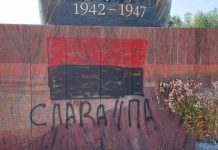


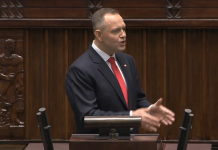
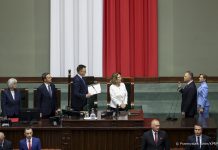



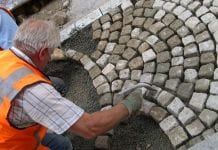

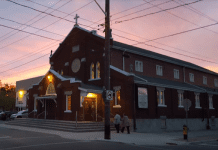
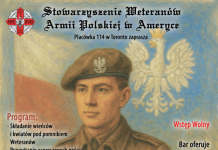
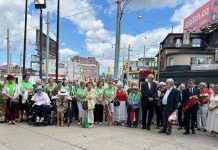
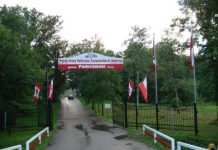




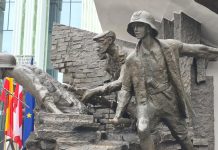
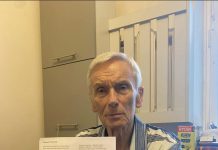





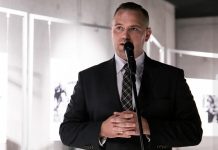




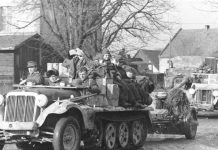
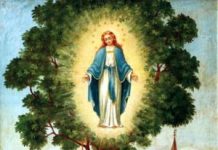


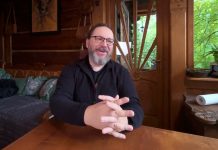

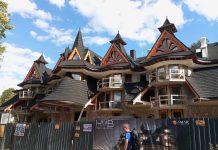
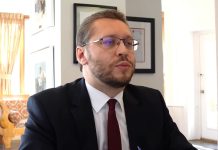
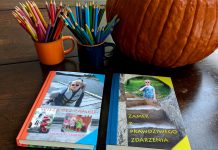
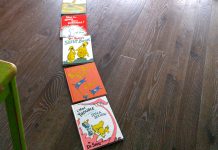
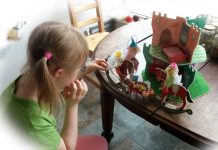
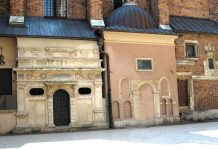
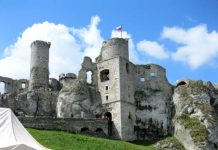
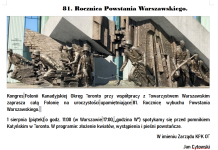

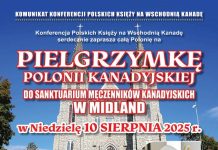


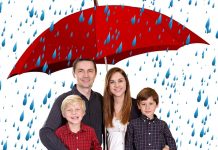


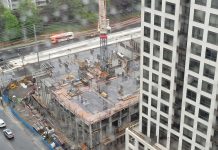
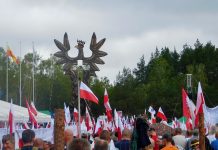


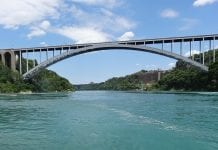
.gif)

